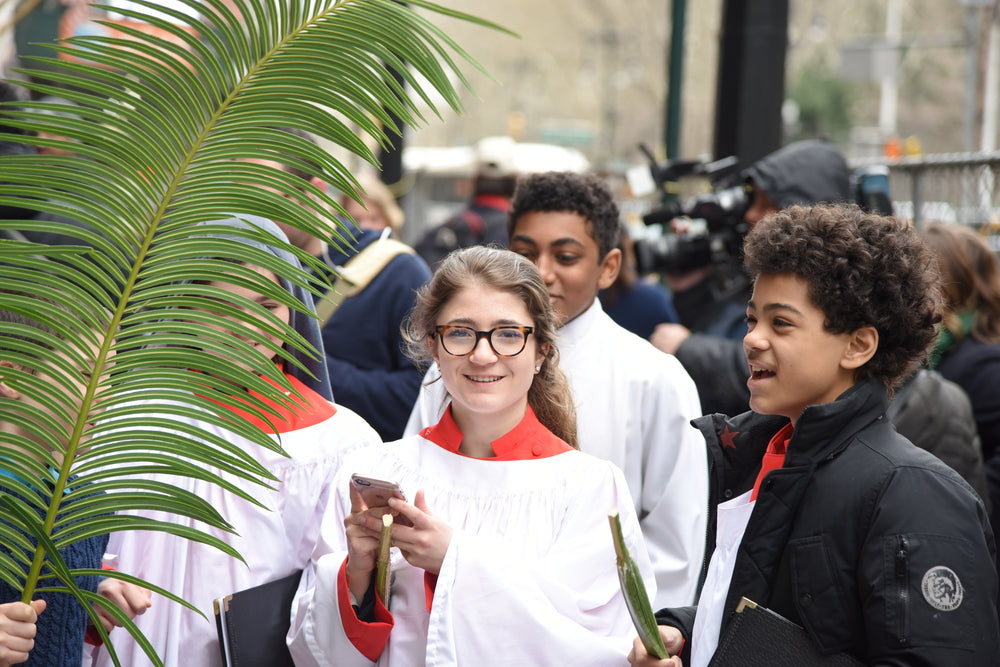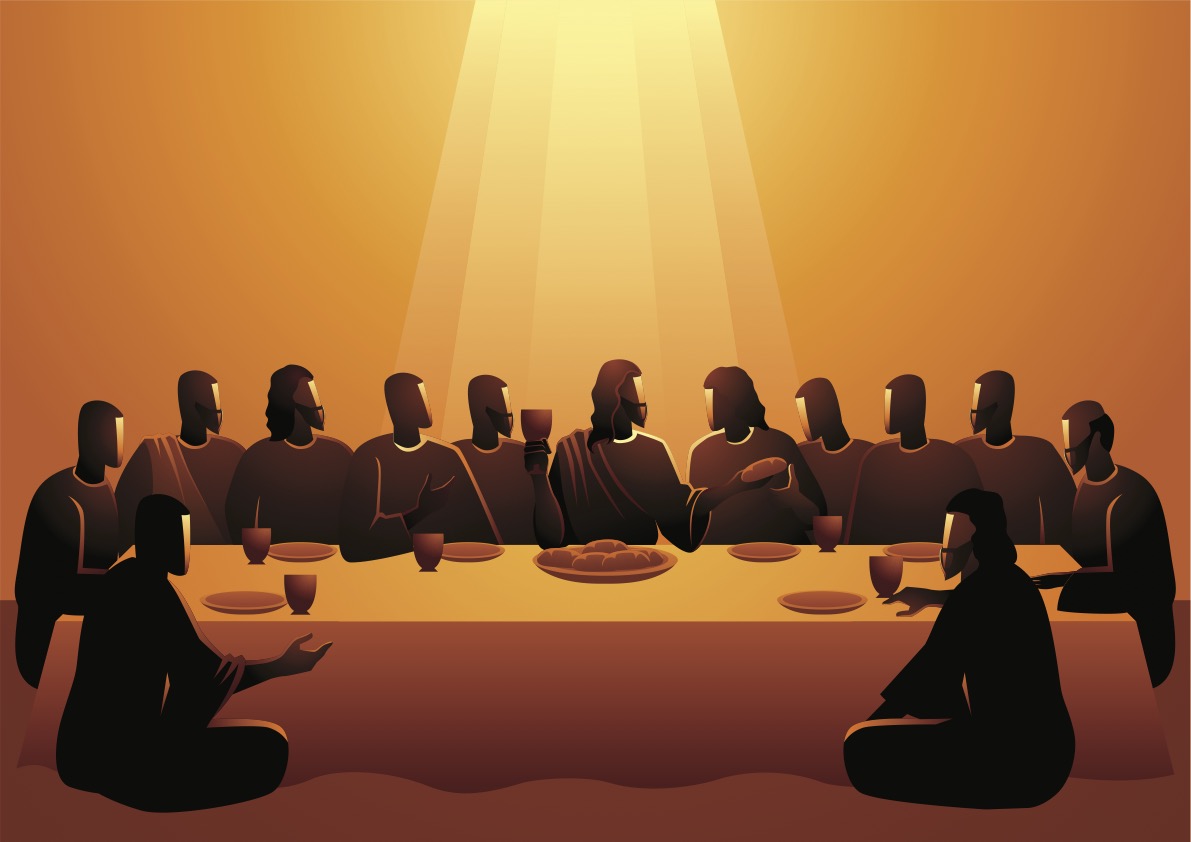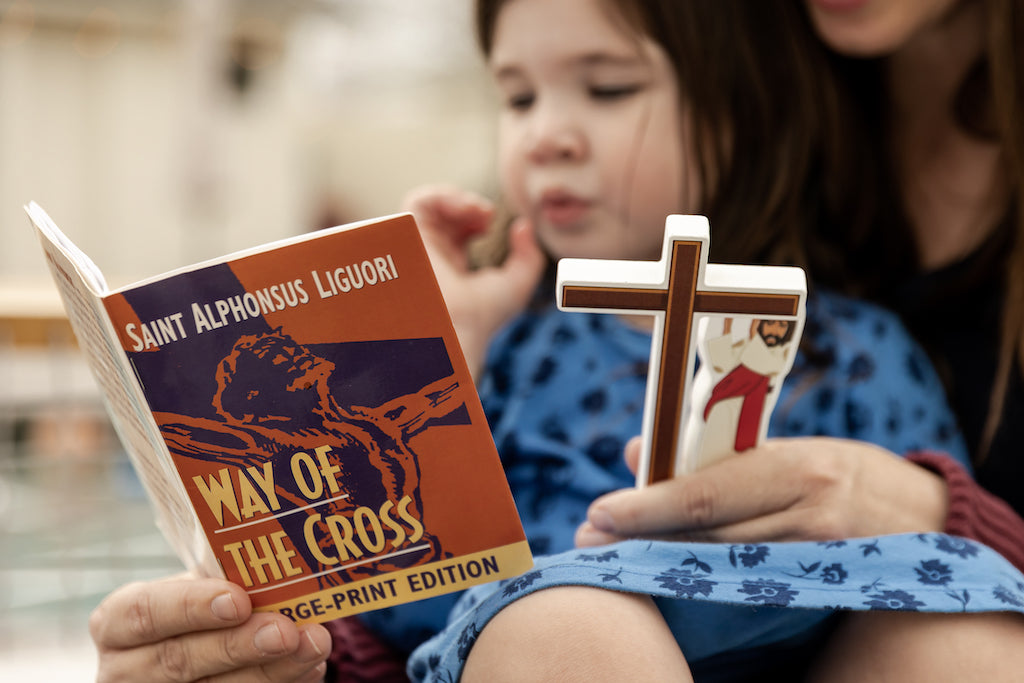
By Colleen Pressprich
As Lent draws to an end and we approach the beginning of Holy Week, it’s worth spending time considering some of the sights and symbols of Palm Sunday.
Here are the answers to common Palm Sunday frequently asked questions.
What does Palm Sunday commemorate and why is it special?
Palm Sunday begins Holy Week. It’s the day we celebrate Jesus’s triumphal entry into Jerusalem.
While Christ had visited Jerusalem throughout his life, this was to be the last, and as He entered Jesus did something different. Instead of entering on foot, Jesus called for a donkey. And in doing so, he claimed the Kingship, fulfilling the Old Testament prophecy of Zechariah that said,
Rejoice greatly, O daughter of Zion!
Shout aloud, O daughter of Jerusalem!
Behold, your king is coming to you;
righteous and having salvation is he,
humble and mounted on a donkey,
on a colt, the foal of a donkey.
As Christ enters the city, the people on the streets are shouting with joy and laying palms down on the street in front of him because they are recognizing Him as the king He is.
Is Palm Sunday found in the Gospels?
Unlike many other events in Jesus’s life, the events of Palm Sunday appear in all four of the Gospels. You can find them here:
- Matthew 21:1-11
- Mark 11:1-11
- Luke 19:28-44
- John 12:12-19
What’s different about mass on Palm Sunday?
In addition to receiving palm branches on Palm Sunday, you might notice that mass starts outside or at the back of the Church with a Gospel reading that tells the story of Palm Sunday. We raise our palms to be blessed, and we process, sometimes into the Church, sometimes around the block, just as the people of Jerusalem did with the Lord as He entered Jerusalem.
What if there are no palms where you live?
Nowadays, most parishes in the U.S. have palms shipped to them. But, it is allowable to use other greens that have been blessed in their place if there are no palms to be had.
So what do we do with our palms after mass?
The palms are to remind us of the kingship of Christ. Because they are blessed, they become sacramentals and cannot be thrown out. Families are encouraged to display them in their homes to remind them of the Lord’s Kingship. You can fasten them to a crucifix, attach one to a bathroom mirror, or put them in a vase (without water) on your mantle.
Does this mean I have to keep my palms forever?
No. At the end of the year, in the weeks leading up to Lent, we bring our palms back to church, where they will be collected and burned to make the ashes for Ash Wednesday.
If you would like to dispose of your palms before that, you are welcome to burn or bury them.
If the first Gospel for mass on Palm Sunday is the events of Palm Sunday, what is read during the “normal” Gospel during mass?
Palm Sunday is also called Passion Sunday, because, on it, we read the entirety of the Passion of Christ during the Gospel. Part of the reason for this is that Palm Sunday kicks off Holy Week, where we spend more time intensely focused on the sufferings of Christ.
Looking for more?
Brother Francis tells the story of Palm Sunday in the episode “He Is Risen.” It’s a wonderful clip to watch at the start of Holy Week!
Colleen Pressprich is the author of Marian Consecration for Families with Young Children and The Women Doctors of the Church. She is a homeschooling mom of five who lives with her family in Michigan.




